The below post is by Chaim (Louis) Meiselman, Judaica Special Collections Cataloger at the University of Pennsylvania Libraries and a Footprints contributor.
Printer’s signatures and marked copies are something which needs attention, and through the Footprints project I have been able to see signatures and marks – something usually reserved for manuscripts and manuscript culture – from the printers of the books – those whose mark is usually left only via the press.
Print culture and manuscript culture differ mainly in this way – print culture disseminates similar or identical items, while manuscript culture is a focused, unique item; the bridge between them is provenance marks, creating a unique copy and an object for study as a singular item.
However, what if a volume has manuscript inscriptions from a printer? This appears to be its own genre of printed work – that of a printer’s association copy. Additionally, we know printers through their printed work; for example, we know the Soncinos through the renowned volumes printed in Rimini and Naples. However, are there printers that are known through a manuscript sort of mark, like a signature, colophon, note, or other marking?
Here are a list of some which I’ve seen through the Footprints project: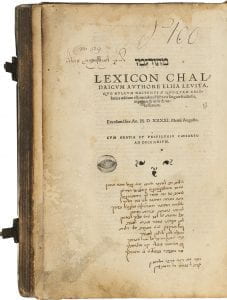
The signature and long poem of Paulus Fagius. Fagius printed in the town of Isny im Allgäu in Bavaria in Germany. he is well known in the history of Hebrew printing as the publisher and printer who worked with Elia Levita in Isny to print Levita’s works (including the meturgeman and the Bovo Bukh). A volume of the Meturgeman now held at the University of Pennsylvania Rare Book and Manuscript library has a manuscript poem written by Fagius in 1541 just after the copy came off the press, gifting the volume to his teacher, Wofgang Fabricius Capito of Strasbourg. Fagius uses an Ashkenazic cursive hand typical of the 16th century; I think that his dedication shows that he had learned (almost certainly from Levita) how to write a Latin-esque dedication in rabbinic Hebrew. Capito died in November 1541; I’m not certain he received the volume or ever got to see it; but here we see an example of manuscript writing from a famous character in the history of Hebrew printing.
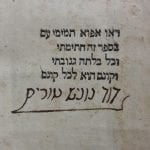 The signature of David Nunes-Torres. Nunes-Torres was an editor, scholar, and type corrector who worked with Joseph Athias in Amsterdam. Torres corrected a set of Shulhan ‘arukh and Maimonides’ Yad ha-hazakah during the first years of the 18th century. He also was a hakham and had a large library of his own, which sold the year after he died. A copy of the Bible printed 1700-1705 in Amsterdam, has his signature under a printed poem; this volume is now in the collection of Archbishop Marsh’s library in Dublin.
The signature of David Nunes-Torres. Nunes-Torres was an editor, scholar, and type corrector who worked with Joseph Athias in Amsterdam. Torres corrected a set of Shulhan ‘arukh and Maimonides’ Yad ha-hazakah during the first years of the 18th century. He also was a hakham and had a large library of his own, which sold the year after he died. A copy of the Bible printed 1700-1705 in Amsterdam, has his signature under a printed poem; this volume is now in the collection of Archbishop Marsh’s library in Dublin.
The signature of Samuel d’Archivolti. R. Samuel ben Elhanan Ya’akov d’Archivolti 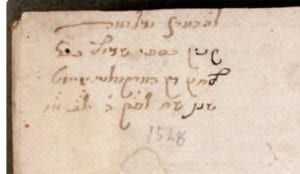 (1515-1611) was a grammarian, poet, and scholar who served as a type-corrector and editor on a number of volumes. He worked at the de Gara, Parenzo, and Bragadin printing houses between 1565 and 1602. He was the author of many works, including Ma’ayan Ganim and ‘Arugat ha-bosem, and a teacher of Leon de Modena. In a copy of the Sefer ha-‘ikarim (printed in Venice, by Cornelius Adelkind, 1543; today in the Brisman Collection at Washington University in St. Louis) d’Archivolti signs and dates his signature to 1548.
(1515-1611) was a grammarian, poet, and scholar who served as a type-corrector and editor on a number of volumes. He worked at the de Gara, Parenzo, and Bragadin printing houses between 1565 and 1602. He was the author of many works, including Ma’ayan Ganim and ‘Arugat ha-bosem, and a teacher of Leon de Modena. In a copy of the Sefer ha-‘ikarim (printed in Venice, by Cornelius Adelkind, 1543; today in the Brisman Collection at Washington University in St. Louis) d’Archivolti signs and dates his signature to 1548.
The signature of Shmu’el Böenft Shnur : Schnur was the printer of Fürth before 1728. He began printing during the later 1680s. He was a Talmud hakham, a respected Torah scholar, and had the title of מו”צ (Mo”ts; Moreh tsedek) in addition to being a printer. He mostly printed editions of great rabbinic works: the editio princeps of the Beit Shemuel on the Shulhan ‘arukh Even ha-‘ezer (1726); a reprint of a commentary on Shulhan ‘arukh Hoshen ha-mishpat called Me’irat ‘enayim in 1691; other rabbinic works such as Naftali sova ratson, sermons on the order of the parshiyot (written by Naftali Hertz Guenzberg) printed 1713; Ma’aseh Hiya by R. Hiyya ha-Rofe of Safed (1726); and an expanded edition of the Nahalat shiv’ah, halakhic novellae on the halakhot of Gitin and Kidushin (1724). His printer’s device was a lone tree in a field. A copy of R. Avraham Saba’s Tseror ha-mor (printed in Venice, 1567, by Giorgio de Cavalli), now at the Baltimore Hebrew University Collection at Towson University, is inscribed by Schnur’s son, Zalman Schnur, and indicates the volume was inherited from his father. 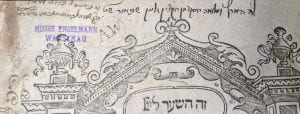
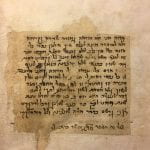 The signature and deed of sale by Gershom Soncino. Gershom (also known by Hieronymus or Girolamo) Soncino is the most prominent printer of Hebrew incunabula. Soncino printed in (Italy) Soncino, Naples, Barco, Pesaro, Brescia, and Rimini (among others); (Greece) Saloniki and (Turkey) Constantinople. A bill of sale on a volume of the Sefer mitsvot ha-gadol at The Library of Congress Rare Book Collections, printed in Soncino in 1488, is written and signed by Soncino on the occasion of his selling the volume to a Mosheh Diena, with the stipulation to not resell the volume within 2 years of his signature.
The signature and deed of sale by Gershom Soncino. Gershom (also known by Hieronymus or Girolamo) Soncino is the most prominent printer of Hebrew incunabula. Soncino printed in (Italy) Soncino, Naples, Barco, Pesaro, Brescia, and Rimini (among others); (Greece) Saloniki and (Turkey) Constantinople. A bill of sale on a volume of the Sefer mitsvot ha-gadol at The Library of Congress Rare Book Collections, printed in Soncino in 1488, is written and signed by Soncino on the occasion of his selling the volume to a Mosheh Diena, with the stipulation to not resell the volume within 2 years of his signature.
Finally, two small other items from families of printers. A poem by a Moses Benjamin Foa appears on a volume of Mahzor minhag Roma, printed in Bologna in 1540, now in the collection of Columbia University Libraries. This may have been a relative of the Foa printers of Venice, including Isaac Foa, who printed there during the 18th century.
A miniature printing of the Mahzor, printed in Prague during the 1830s (the exact date of printing is unknown), a signature appears across multiple leaves – that of Yedidiah Shelomoh Bak of the Bak family in Prague. This volume is today in the Baltimore Hebrew College collection at Towson University.
Non-printed marks that printers left in printed books is a field that still needs more attention, and as more examples of this genre are added to the Footprints database, we will have a broad range of primary sources to draw upon for this work.

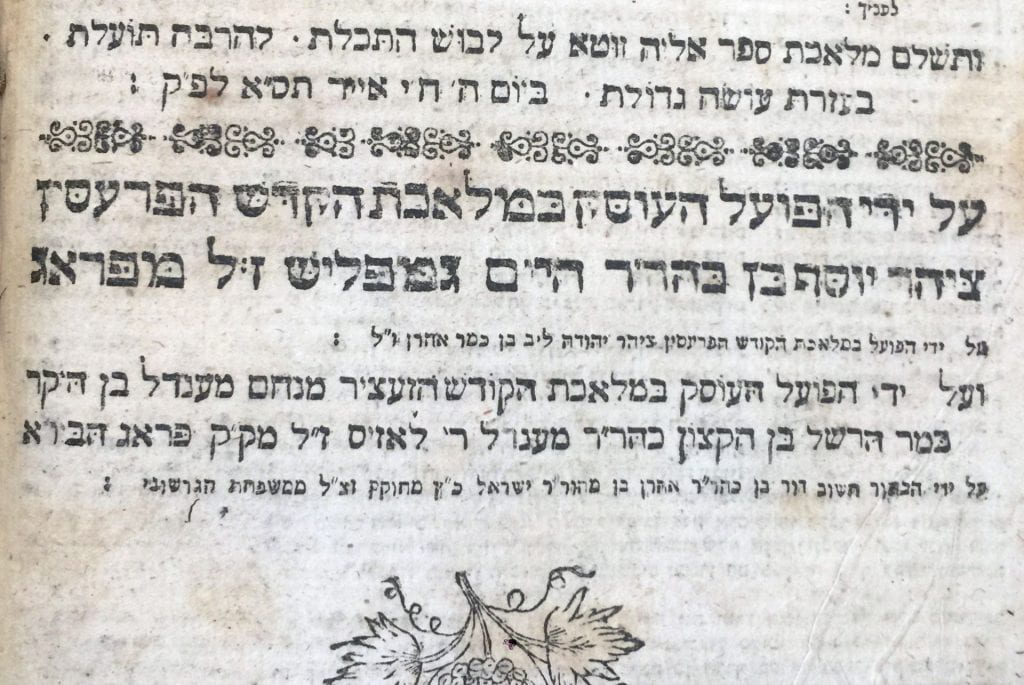

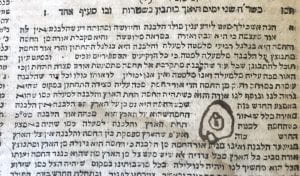
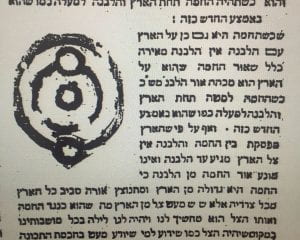
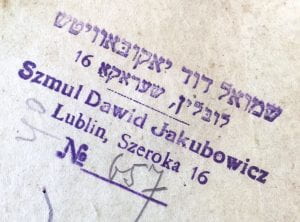



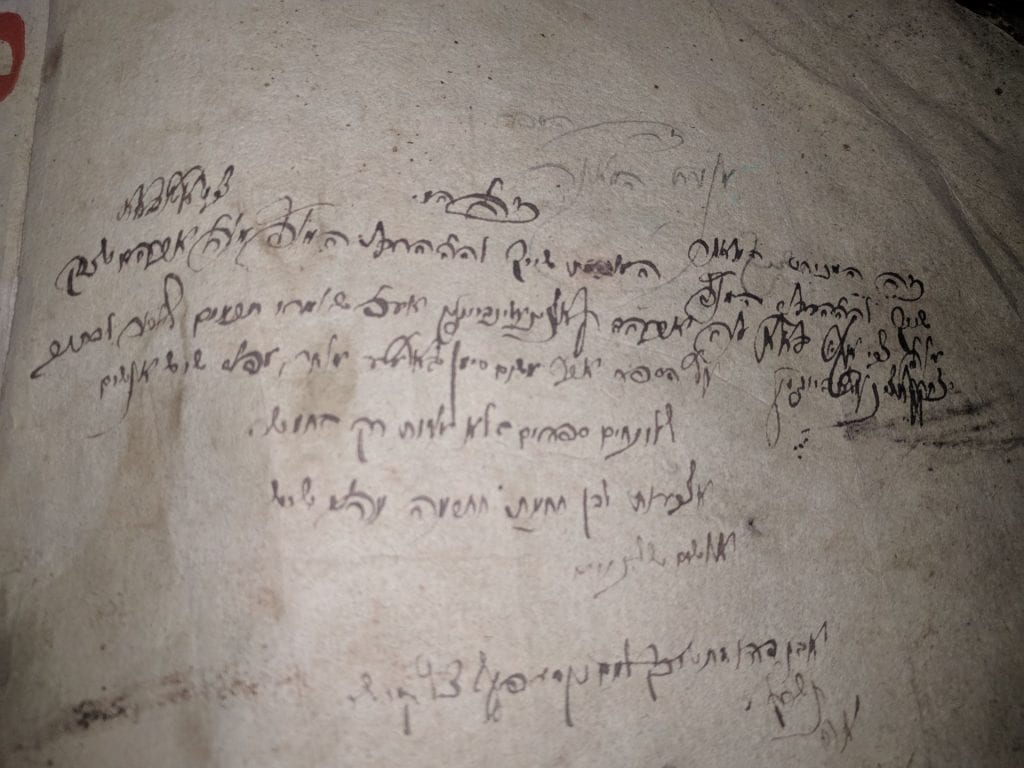


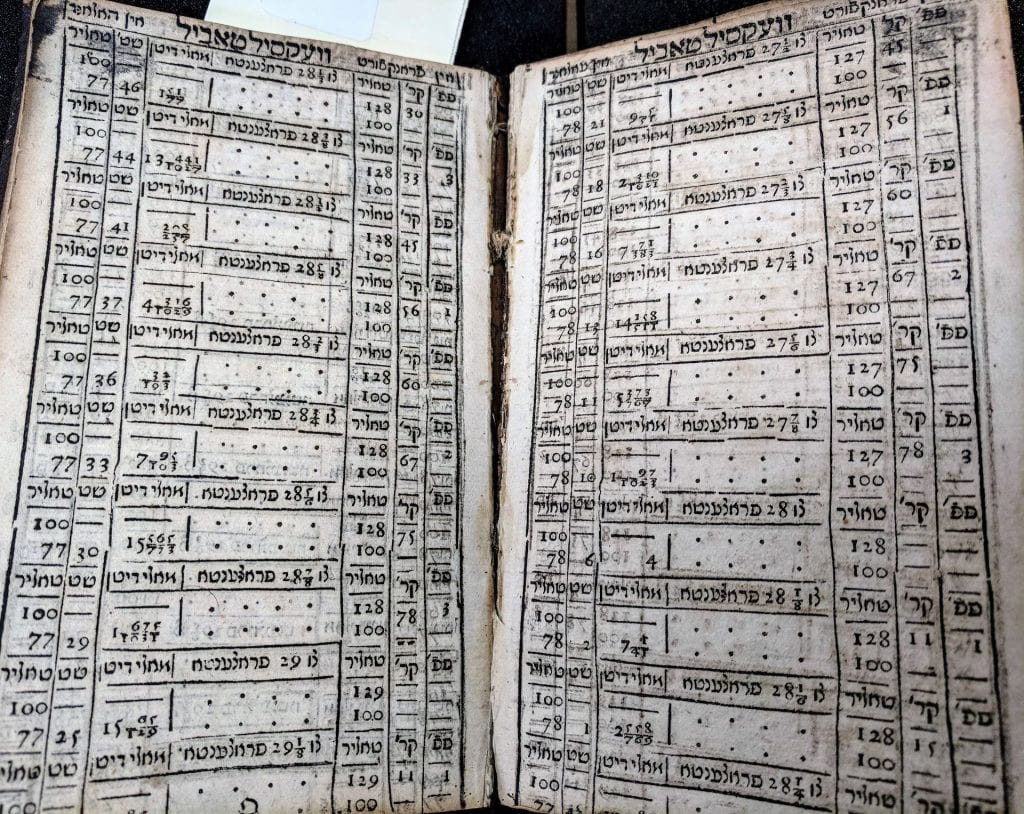
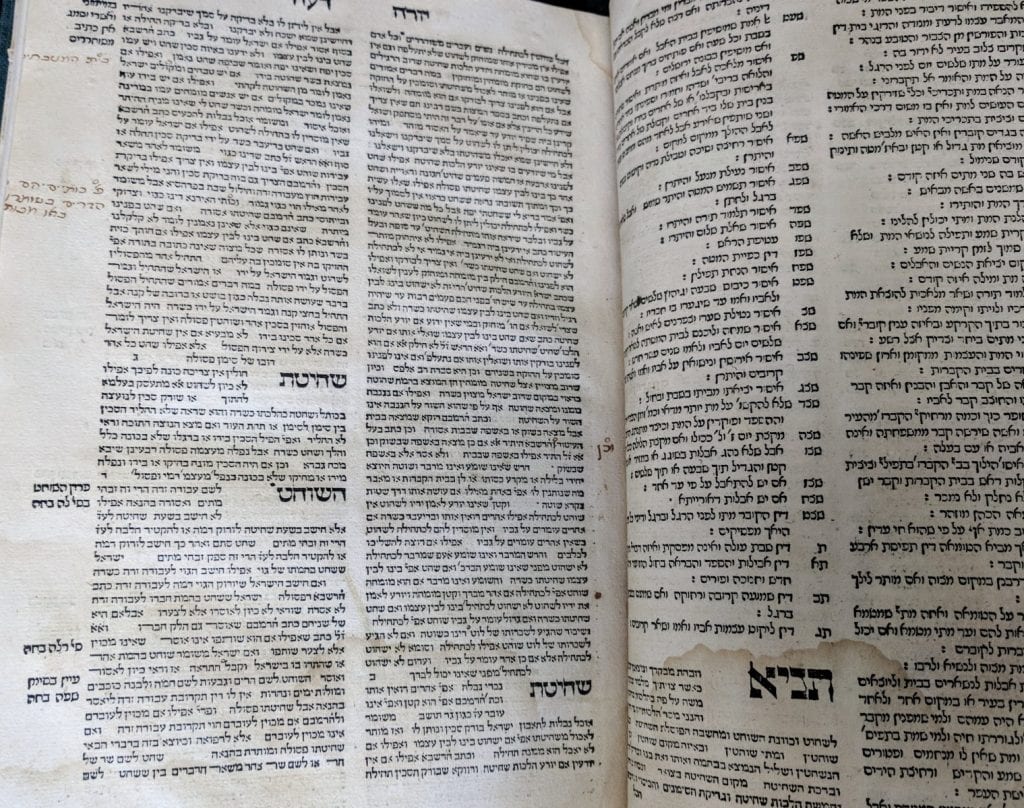

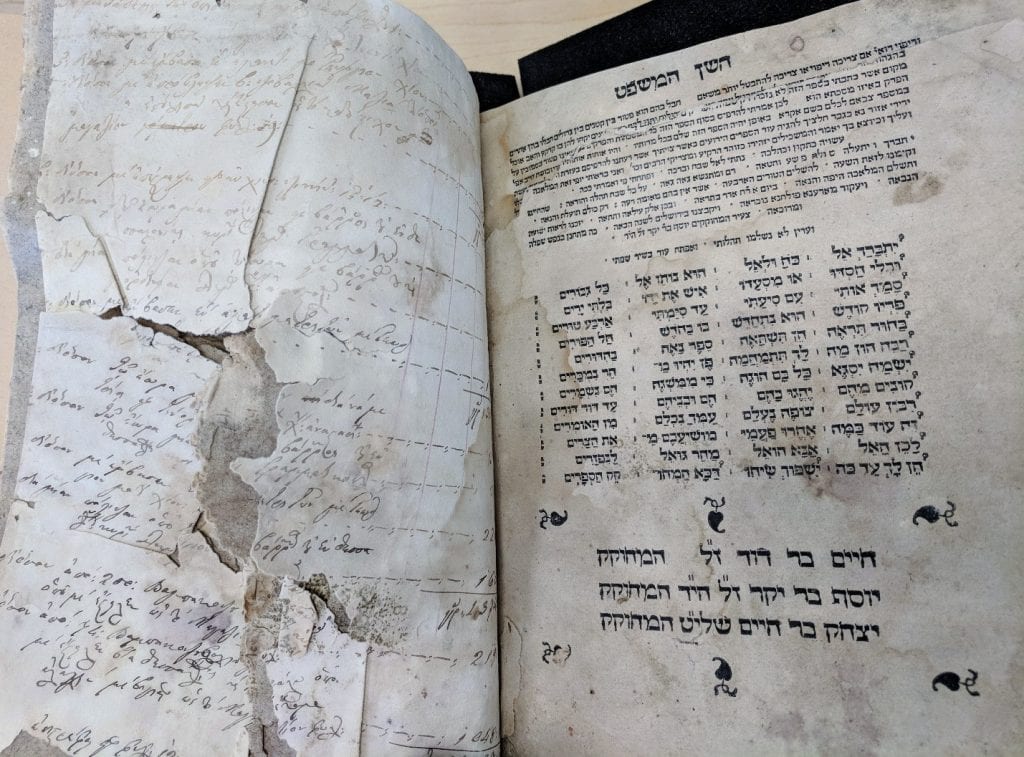
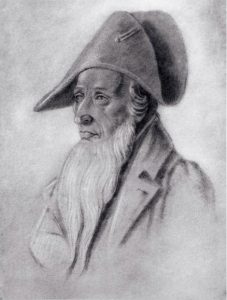
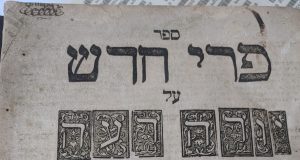



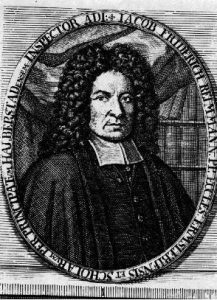
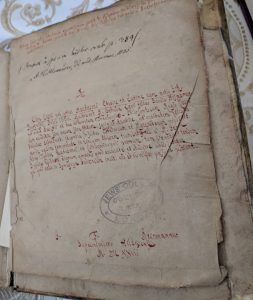
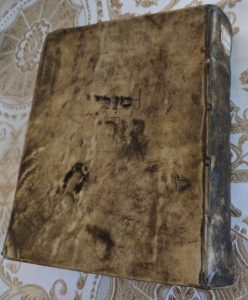

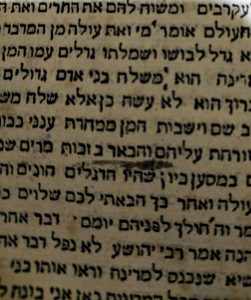
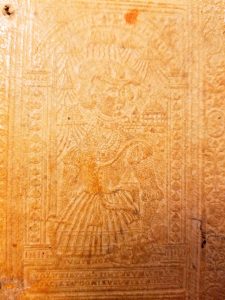

Recent Comments